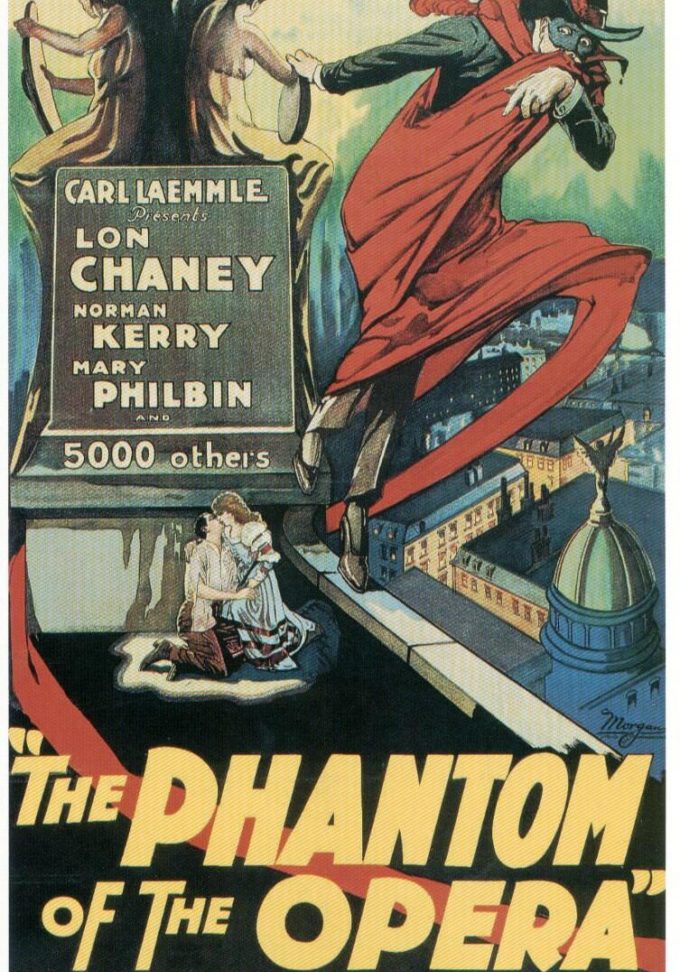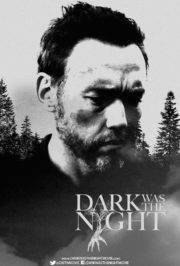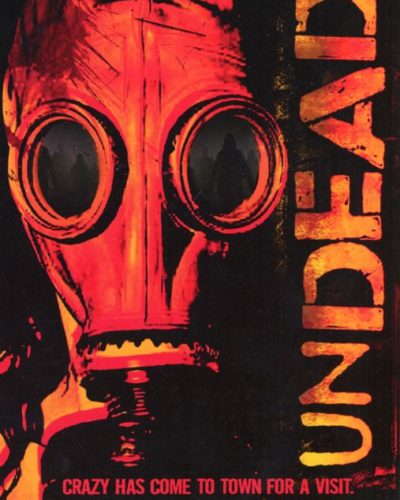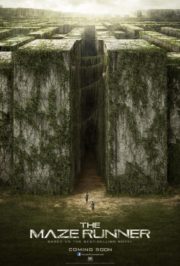Whispers in the Shadows: An In-depth Review of “The Phantom of the Opera” (1925)
“Beneath your dancing feet are the tombs of tortured men—thus does the Red Death rebuke your merriment!” This chilling line from “The Phantom of the Opera” encapsulates the eerie tone that sets this 1925 classic apart. Directed by Rupert Julian, this silent film employs masterful storytelling to delve into the macabre depths of obsession and horror. The tale of a disfigured musical genius lurking beneath the Paris Opera House and his unsettling affection for a beautiful soprano, Christine Daaé, unfolds in grand gothic style, leading audiences down a path of suspense and terror.
Echoes of Dread: Atmosphere and Cinematic Artistry
The atmosphere of a horror film is its lifeblood, and “The Phantom of the Opera” pumps this through every shadow-laden corridor with grace. The horror experience is crafted not with blood and gore, but with an aura of suspense and shock. The director’s approach to horror is theatrical, leveraging the grandeur of the opera house alongside the claustrophobic labyrinths beneath. Every high angle shot, every flicker of candlelight works in tandem to evoke a sense of voyeurism and disquiet in the viewer.
The film’s cinematography is particularly noteworthy. Cinematographer Charles Van Enger intertwines subtleties of lighting and creative camera techniques to accentuate the grotesque and the beautiful. Noteworthy is the unmasking of the Phantom, where the audiences find their imaginations surpassed by the startling reveal of his visage. The lack of color is turned into a strength, as the monochrome palette contributes to the timeless aspect of horror created—horror that thrives in the shades of darkness and light.
Sound, in a silent film, is all about the orchestration that accompanies the moving images. While the original screenings in 1925 would have witnessed a live orchestra, today we experience it through score reproductions. When well-matched, the music soars and crashes with the narrative, making hearts pound in rhythm. It is in the moments of palpable silence, however, that tension builds before crescendoing into fear—a technique future filmmakers would do well to note.
Eerily Human: Performance and Horror Personified
Performances in a silent horror film rely on facial expressions and body language, and “The Phantom of the Opera” is a triumph in this regard. Lon Chaney’s portrayal of the Phantom is a testament to his title of ‘Man of a Thousand Faces’; able to communicate complex emotions without a single uttered word. His physicality imbues the character with a frightening, yet tragic dimension, allowing audiences to perceive the Phantom as both monster and victim.
The supporting cast complements Chaney’s performance effectively, with Mary Philbin providing the necessary innocence and horror as Christine. The actors’ melodramatic expressions, essential for silent storytelling, aid in developing the narrative, and make their terror palpable.
The film skates along the edges of psychological and Gothic horror, steering clear of overt supernatural elements or visceral body horror. Instead, it employs rich settings, character-driven fear, and eerie iconography to haunt viewers. The mechanics of horror it employs are more about thrills and chills rather than blood spills, and it executes these with a dramatic flair that remains effective even a century later.
Reflection of a Dark Mirror: Themes and Impact
“The Phantom of the Opera” is more than a mere fright fest; it dips its artistic brush into themes of unrequited love, beauty versus monstrosity, and the lengths to which one might go for passion. The societal commentary on appearance and acceptance is subtle yet poignant, enhancing the film’s resonance and giving it a layer of depth that modern audiences can appreciate. This thematic layering is part of what elevates the film from a simple horror to a genre masterpiece.
In terms of robustness as a horror offering, it stands tall. While modern viewers may not recoil in terror as past audiences might have, the film maintains a grip on the viewer’s psyche, provoking unease and reflection. The sense of immersion it provides into the Parisian Gothic world is both unsettling and mesmerizing.
Horror aficionados and cinema historians will derive great enjoyment from this film. Its influence on the genre makes it worth the watch, and for those with an eye for film-making magic wrought without modern technology, it offers a treasure trove of technique and talent. Casual viewers may need to adjust to the silent film format but can still find enchantment in its shadowy embrace.
When juxtaposed with horror greats that span the timeline, “The Phantom of the Opera” claims its rightful place as an undying phantom itself, enduring beyond its era. It provides a clear lineage to the atmospheric films of today, such as Guillermo del Toro’s “Crimson Peak” or even the thematic complexity found in Jordan Peele’s “Get Out.”
The Final Curtain Call: A Haunting Legacy Preserved
Amid screams and shadows, “The Phantom of the Opera” resonates as a hallmark of horror craftsmanship. Its strengths lie in the atmospheric tension, the haunting visuals, and the emotive performances leading to a legacy that still captivates. Though lacking the shocks and gore of modern horror, its weaknesses are scant and mostly born of its vintage which, arguably, only adds to its charm.
With a recommendation that spans the spectrum from horror purists to cinephiles looking for a classic thrill, the film stands as a masterstroke of silent cinema. While it contains no graphic content to warn against, the Phantom’s visage may haunt the dimly lit corridors of your imagination long after the film’s conclusion. In sum, let yourself be drawn into the opulent, shadowy depths of this cinematic phantom—it is an echo of horror’s origins that should not be missed.




